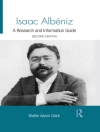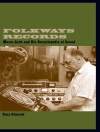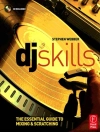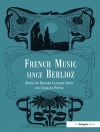Featuring 102 music examples, this edited collection features contributions by leading scholars from the UK, United States, Australasia and Europe on what characterized the period.
This collection focusses on the stylistic and cultural interchange that characterizes the musical period of the mid-Baroque (c.1650-1710). The idea of musical transition during this period is evident in two principal ways: geographical and chronological (the two often overlap). Chapters examine geographical transition by tracing the exchange of regional and national styles, while considering chronological evolution from the perspective of music theory, performance practice, source studies or specific repertoires. Studies range across instrumental and vocal music, both sacred and secular, and encompass some of the main European traditions prevalent at the time: Italian, German, French and English. The collection features contributions by leading scholars from the UK, the United States, Australasia and Europe.
Tabla de materias
List of Illustrations
Acknowledgements
List of Abbreviations
Preface –
Carrie Churnside
Part I. Historical and Geographical Transitions in German and English Instrumental Music
1.
Duplex Genius: The French and Italian Musical Styles in the Instrumental Works of Johann Christoph Pez –
Samantha Owens
2. Changing Concepts and Priorities: The German Consort Suite at the Start of the Eighteenth Century –
Michael Robertson
3. French Dances and the Consort Dances of Matthew Locke and his English Contemporaries –
Andrew Woolley
4. ‘Italian sonatas in orchestral garb’: Purcell and the ‘reforme of musick
al’ Italiana’ –
Alan Howard
Part II. Changing Notational and Performance Practices
5. Key Signatures before Keys: Conceptualising and Notating Pitch Relations in the Seventeenth Century –
Gregory Barnett
6. Continuity and Change in Continuo Practice: The Case of Italian Opera –
Peter Holman
Part III. Two Case Studies in Mid-Baroque Church Music
7. Musical Transitions at St. Mary’s Church in Lübeck, 1630-1705 –
Kerala J. Snyder
8. The Creation of a ‘Bolognese Style’: Maurizio Cazzati as the Driving Force Behind Evolving Musical Taste in Bologna (1657-1671) – Rodolfo Zitellini
Part IV. Transition in Italian Instrumental Music
9. On the Cusps of Stylistic Change: Vivaldi’s Sonata RV 820 for Violin, Cello and Continuo and its Seventeenth-Century Roots –
Michael Talbot
10. Naples at a Crossroads: Transformations in Neapolitan Instrumental Music at the turn of the Seventeenth Century –
Guido Olivieri
Part V. Change and Influence in Vocal Music
11. How Italian is the
tragédieen musique of Quinault and Lully? –
Michael Klaper
12. Euterpe’s Revenge, or: The Italian Opera Aria c. 1660-1720 –
Colin Timms
13. ‘Ho procurato di seguitare … i tre maggiori lumi della nostra professione’: Homage and Modernity in Perti’s
Cantate morali e spirituali, op. 1 (1688) –
Carrie Churnside
14. A Microcosm of Italian Cantata Composition in the 1690s: The Seven Settings of
A voichel’accendeste by Francesco Maria Paglia –
Rosalind Halton
Sobre el autor
CARRIE CHURNSIDE is Associate Professor in Music at Royal Birmingham Conservatoire.












